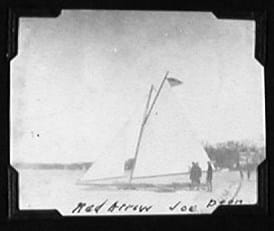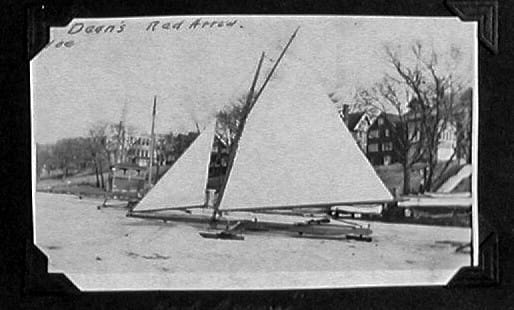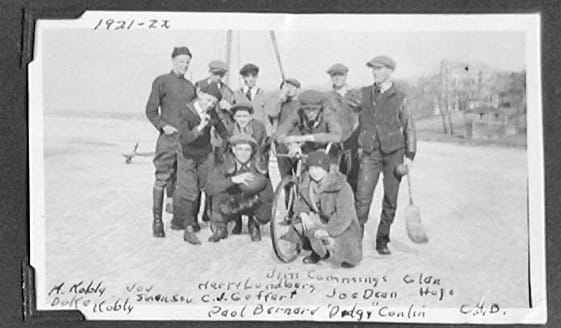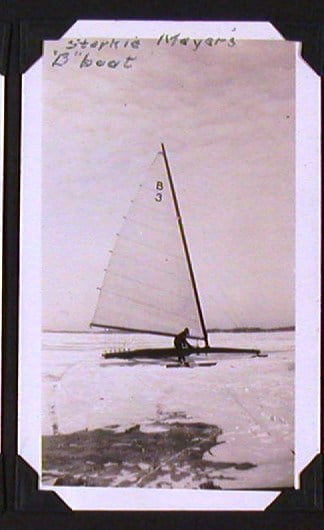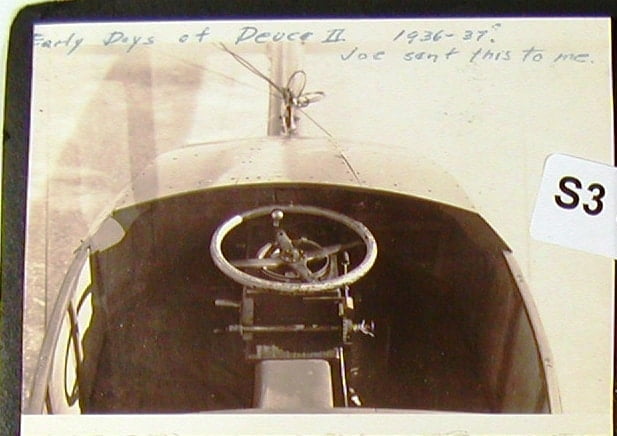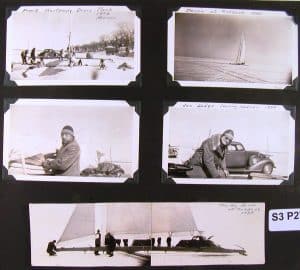4LIYC Ice Yacht History: RED ARROW
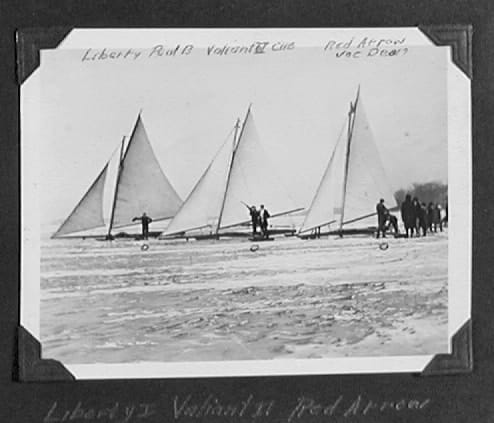 The recent “Garage Find” post inspired a morning of research on RED ARROW, a Madison-style stern-steerer built by William Bernard in the 1920s.
The recent “Garage Find” post inspired a morning of research on RED ARROW, a Madison-style stern-steerer built by William Bernard in the 1920s.
Peter Fauerbach mentioned that after years of being stored in an Madison apartment building owned by Warren Tetzlaff, RED ARROW was sold in the mid 1990s and shipped to Montana.What happened in between covers some interesting Madison history.
RED ARROW was originally owned by Joe Dean Jr., son of prominent Madison doctor Joseph Dean who founded the Dean Clinic. Joe’s brother, Frank, raced it as well. The Deans lived next door to the Bernard Boat House on Gorham Street on Lake Mendota.
The boat was named after the 32nd Infantry Division, a World War One Army National Guard Division made up of units from Wisconsin and Michigan. RED ARROW won the C Class at the 1922 Northwest sailed on Lake Winnebago in Oshkosh, WI.
RED ARROW has a slight link to the famous aviator, Charles Lindbergh, who briefly attended the University of Wisconsin in 1921. When Lindbergh visited Madison in 1929, Dr. Joseph Dean Sr. told his son, Frank, that if he could get a ride in Lindbergh’s plane, he would buy him an airplane. Frank was successful and his father bought him that airplane.
More on Charles Lindbergh and Madison Ice Sailing:
Charles Lindbergh Learned About Speed on Lake Mendota’s Ice
Meade Gougeon’s Essential “Evolution of Modern Sailboat Design”
Photos from the William and Carl Bernard Collection

